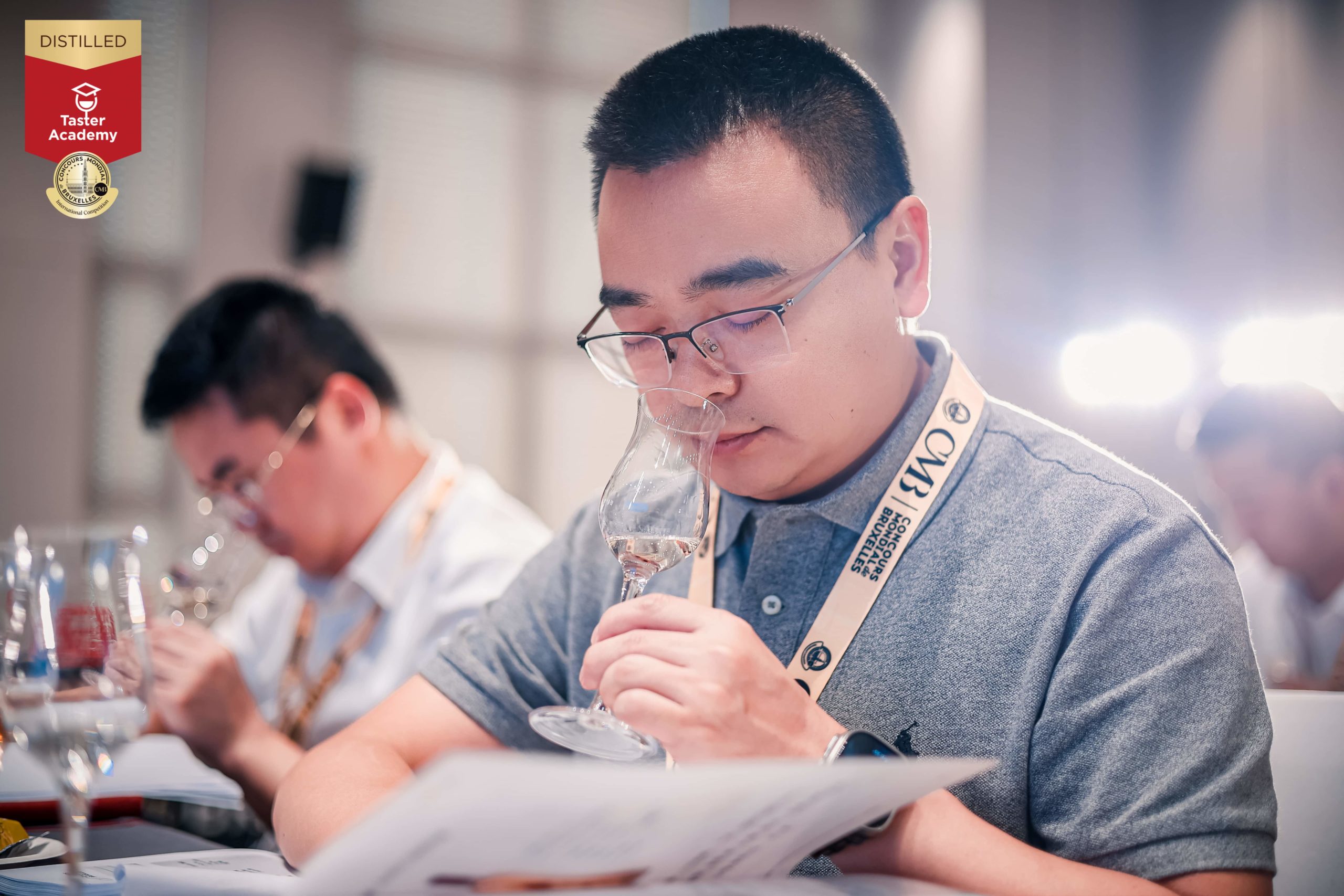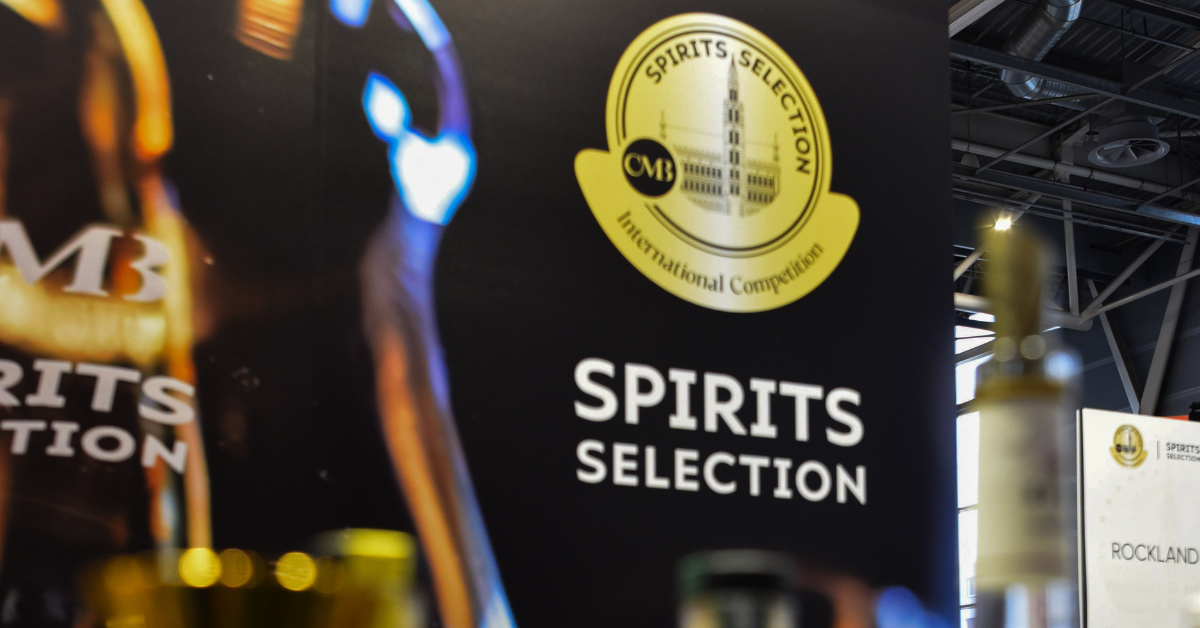PGI Guadeloupe rum – An endorsement that guarantees provenance whilst fostering creativity
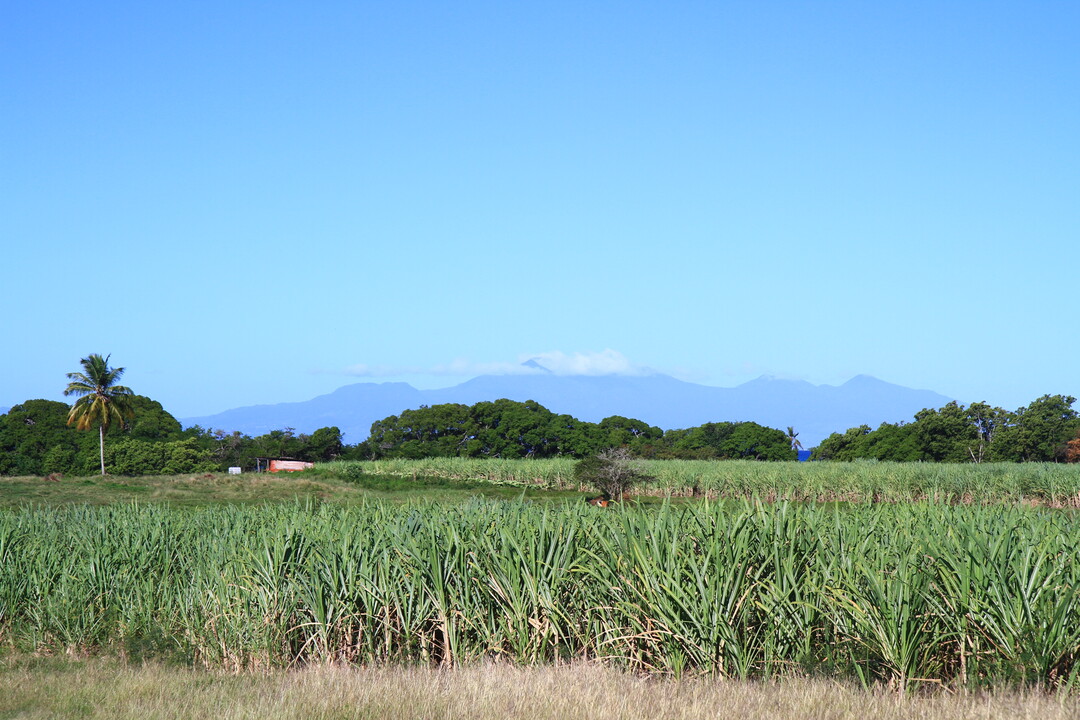
A geographical indication dating back to January 2015 stipulates production conditions for both agricultural and traditional rums from Guadeloupe. The PGI guarantees the geographical origin and protects producers, but the specifications are designed to be relatively flexible, giving producers sufficient freedom. The GI allows each distillery to produce its own distinctive style, which is the most successful aspect of it.
Sandwiched between the Caribbean Sea and the Atlantic Ocean, Guadeloupe is a very varied archipelago of islands in the French West Indies. Grande-Terre, Basse-Terre, Marie-Galante and Les Saintes are all names that conjure up images of white sandy beaches and palm trees. Its outstanding climate allows sugarcane to thrive here and produce sugar, “rhum agricole” or agricultural rum and traditional rum.
In June 2022, Guadeloupe will host the 23rd Spirits Selection, providing the opportunity to turn the spotlight on the region and its rum industry through a series of articles published ahead of the competition. An ad hoc editorial group has been established with members who all share the same passion for rum. The resultant articles will create documentary resources on the Guadeloupe geographical indication, its terroir, the specific nature of its distilleries, the production of organic sugarcane and single-site offerings, to name a few.
Guadeloupe’s annual rum production totals approximately 80,000 hectolitres of pure alcohol, the equivalent of a staggering 8 million litres. This is divided between 43% agricultural rum and 57% traditional rum made from sugarcane by-products. The rum industry is made up of family facilities, 70% of them still small.
A geographical indication dating back to January 2015 stipulates production conditions for rums from Guadeloupe. It aims not only to guarantee their geographical origin, but also their quality, reputation or any other feature that can be associated with Guadeloupean production.
PGI specifications are designed to be relatively flexible – they set out an obligation of means but not of results because the rums bound for bottling do not have to be approved by a tasting panel. The PGI outlines production techniques whilst giving producers sufficient freedom. There are no hard and fast rules on boundaries, paving the way for an extensive range of products. The GI allows each distillery to produce its own distinctive style and therefore create a point of difference in the world of rum.
- A GI for agricultural and molasses-based rums
- Yields per hectare
- Varieties of sugarcane
- Irrigation and spraying
- Harvest season and distillation
- Fermentation and procedure
- Continuous column distillation, batch-distillation in a still or a multi-stage column
- Mandatory ageing in the tropics
- Key takeaways
1. A GI for agricultural and molasses-based rums
PGI Guadeloupe recognises two types of rum: agricultural rum, made from pure fresh sugarcane juice also called ‘vesou’, and the so-called industrial rum, which can be made from molasses, syrup or honey and is only produced by the sugarcane industry. Unlike Martinique, where virtually all sugarcane production is used to make agricultural rum, Guadeloupe still has a large sugar industry with the Grande Anse refineries on the island of Marie Galante and Gardel on the island of Grande-Terre.
PGI Guadeloupe recognises two types of rum: agricultural rum, made from pure fresh sugarcane and the so-called industrial rum made from molasses, syrup or honey.
Of the 600,000 tonnes of sugarcane produced annually over 13,200 hectares of dedicated farmland, only 10% is earmarked for production of agricultural rum; the remaining 90% are processed by the refineries.
Sugar production, however, creates molasses to the tune of around 43kg per tonne of processed sugarcane, totalling nearly 23,000 tonnes of molasses a year. The molasses can subsequently be turned into rum, referred to as traditional rum. Only one site distils rum from molasses in the archipelago and that is the Bonne Mère refinery in Sainte Rose. It buys fresh molasses from the two refineries to produce rums which deliver appealing balsamic notes. Molasses-based rums are blended into many regional and national brands, including Negrita, Old Nick, Darboussier, Fajou and Contrebande along with punches and infused rums by Madras.
Eight on-stream distilleries produce only agricultural rum: Damoiseau, Bologne, Longueteau, Montebello and Reimonenq the islands of Grande Terre and Basse Terre; Bellevue, Bielle and Père Labat on the island of Marie Galante. In addition to these are the rum brands Karukera and Séverin and Mabi punches which do not own their own fermentation/distillation facilities.
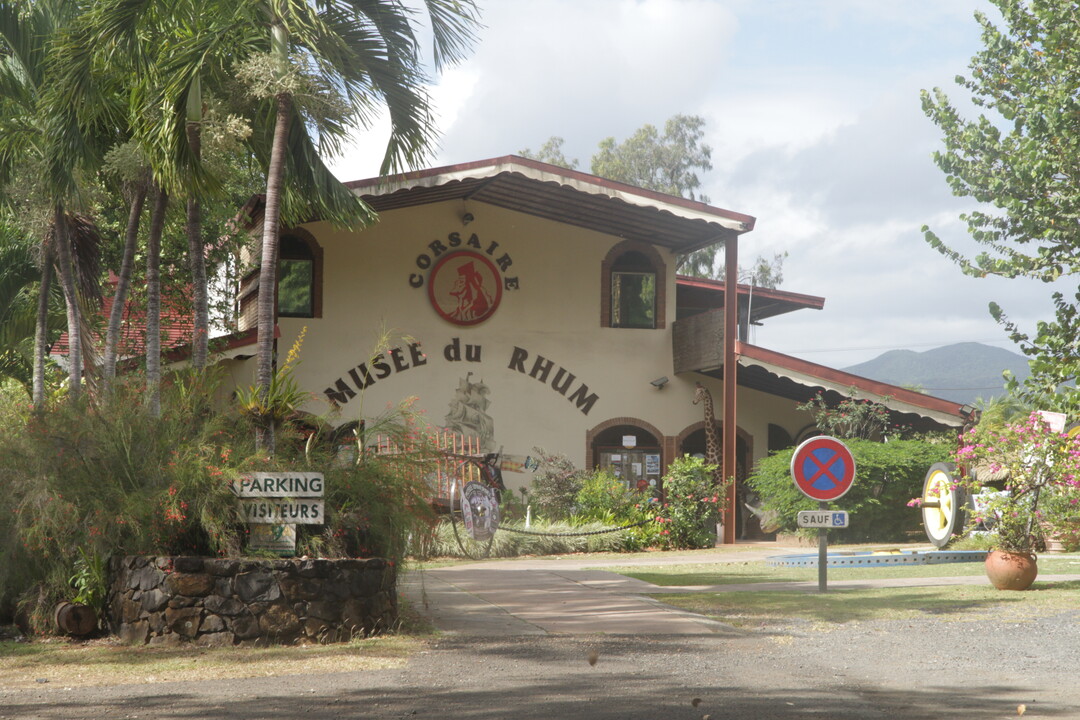
Picture : Reimonenq Distillery and its rum museum
A tenth distillery completes the Guadeloupe rum picture. The Papa Rouyo distillery produces pure sugarcane juice rum but is not eligible for the PGI because regulations for Guadeloupean agricultural rums make it mandatory for producers to crush, ferment and distil the juice on the same site. At the moment, the crushing facilities located in Le Moule produce the fresh juice which is then taken to the distillery situated in Goyave on Basse Terre.
Eight on-stream distilleries produce agricultural rum and one distillery produces traditional rum from molasse
There are also blends of traditional and agricultural rum, for example at Karukera and Damoiseau. The balsamic notes meld well with the fruity side of agricultural rums. They are also entitled to the Guadeloupean Rum designation.
2. Yields per hectare
In theory, the GI does not impose any restrictions on sugarcane production per hectare. Production ranges from 30 to 80 tonnes and even up to 100 tonnes on Basse Terre. It is influenced by the type of soil, aspect of the field, amount of water the sugarcane receives, use of spraying and the selected varieties of sugarcane.
3. Varieties of sugarcane
All varieties are accepted under the GI. The choice of variety depends on its adaptability to the soil type. White, yellow, red, blue, grey (Bielle distillery) and black sugarcane (Bologne distillery) are the mostly widely planted varieties for producing agricultural rums. Another noteworthy point is that there is an extensive range of sugarcane varieties that can be specific to producing sugar.
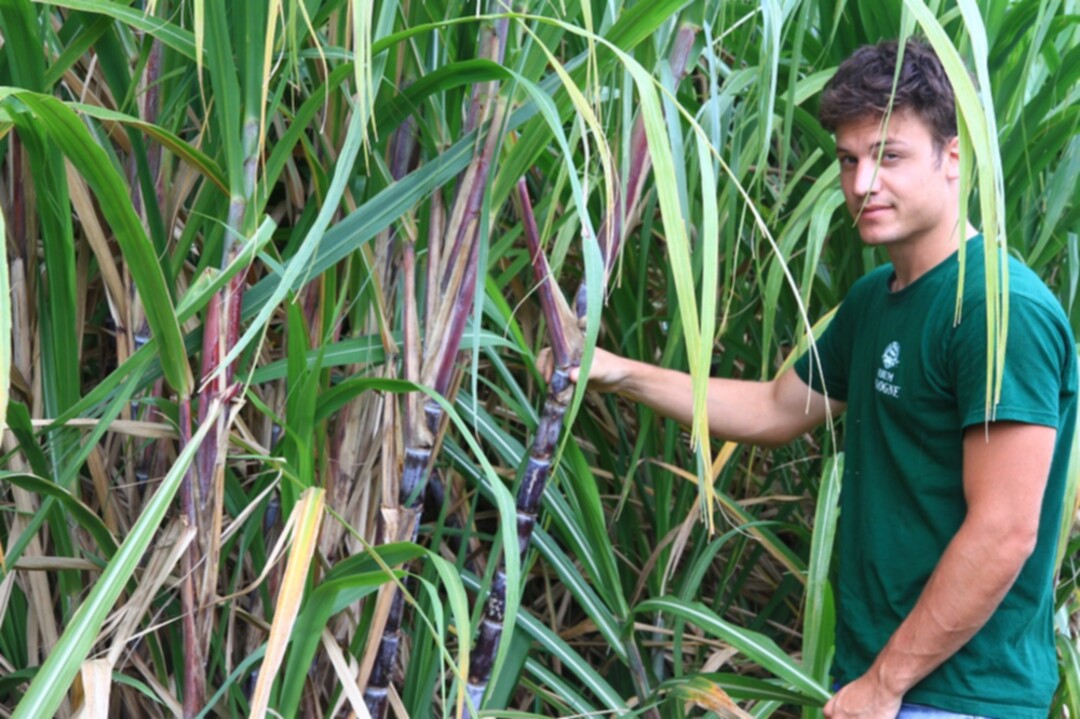
Picture : black cane in Bologne distillery
The choice of variety depends on the type of soil where it is due to be grown (acidic, alkaline, aspect), as well as its resistance to disease, response to farming techniques, harvesting method and of course the desired aromatic and flavour profile.
But although all varieties are permitted under the GI, producers have to factor in other constraints. The variety of sugarcane cannot be too fibrous, otherwise the juice cannot be extracted in mills. If the sugarcane is harvested by machine, then a variety where the leaves can be removed fairly easily by a fan is preferred. When leaves are too firmly attached to the stalks, they end up in the hopper with the cut sugarcane, which can have unwanted consequences on the end product. This limitation does not apply to hand harvesting because the cutter removes the leaves.
All varieties are accepted under the GI. The choice of variety depends on the type of soil, its resistance to disease, response to farming techniques, harvesting method and the desired aromatic and flavour profile
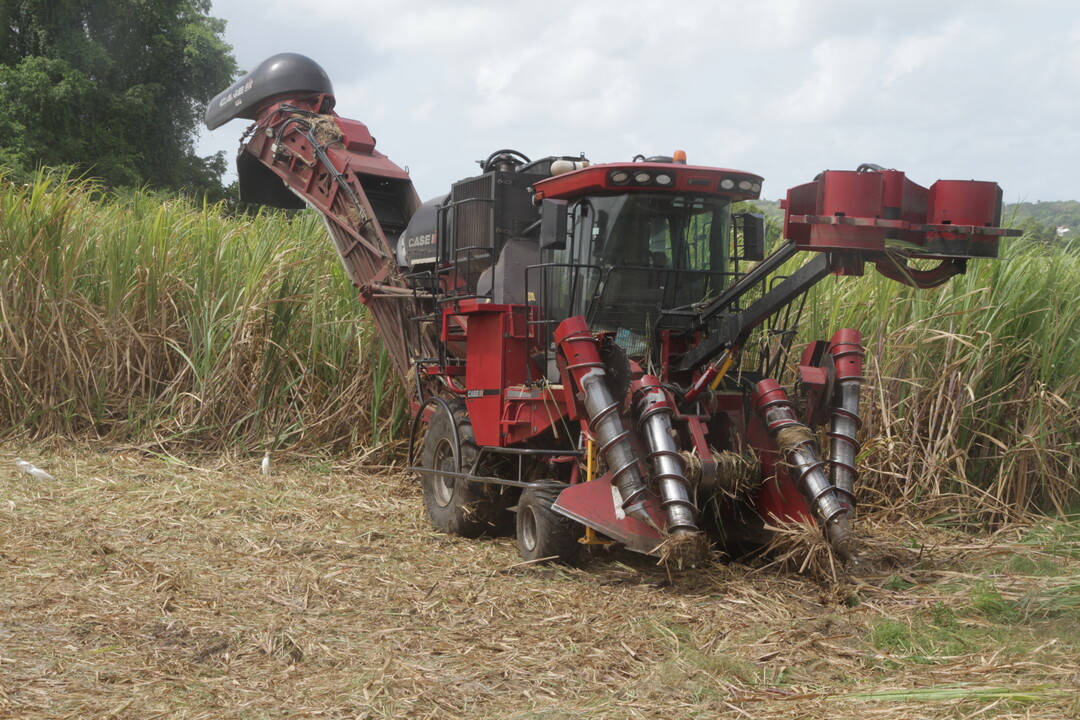
Picture : A machine to harvest the sugarcane
4. Irrigation and spraying
It goes without saying that the amount of water the sugarcane receives throughout the growing season is a key factor in a parcel’s yield.
In the Guadeloupean archipelago, which is subject to a dry season (from December to May) and a wet season (June to November), there are significant differences in rainfall from one region to another. The Grande Terre and Marie Galante regions have less rainfall than Basse Terre. Although irrigation is permitted under the GI, and could have a positive impact on yields in the driest areas, it is very little used.
The decision to irrigate a field or not is contingent upon technical and economic constraints, but also available water resources. The water table in Grande Terre and Marie Galante is only replenished by infiltrations of meteoric water during the rainy season and dries up fairly quickly during the dry season. In recent times, this fragile equilibrium has been disrupted by climate change. 2020 was listed among the hottest and abnormally dry years. In 2019, significant differences were recorded from one region to another or major shortfalls at unusual times. This imbalance jeopardises the available water resources needed for any potential irrigation.
Although irrigation is permitted under the GI, and could have a positive impact on yields in the driest areas, it is very little used.
The location’s topography and size of the fields also imposes significant financial constraints, so much so that very few small fields are irrigated. On Grande Terre, only fields farmed by the Gardel sugar refinery are large enough to warrant the investment.
The vinasse stemming from the production of rum represents sizeable volumes in each distillery but also in the sugar refineries. It makes good soil amendments. The GI allows it to be spread, but under certain conditions. It must be broken down beforehand by aeration in tanks to reduce the chemical oxygen demand (COD) and avoid polluting the water table and soils. More often than not, it is then mixed with bagasse to be spread on soils, once the vinasse has been analysed and approved by the environmental agency (DEAL).
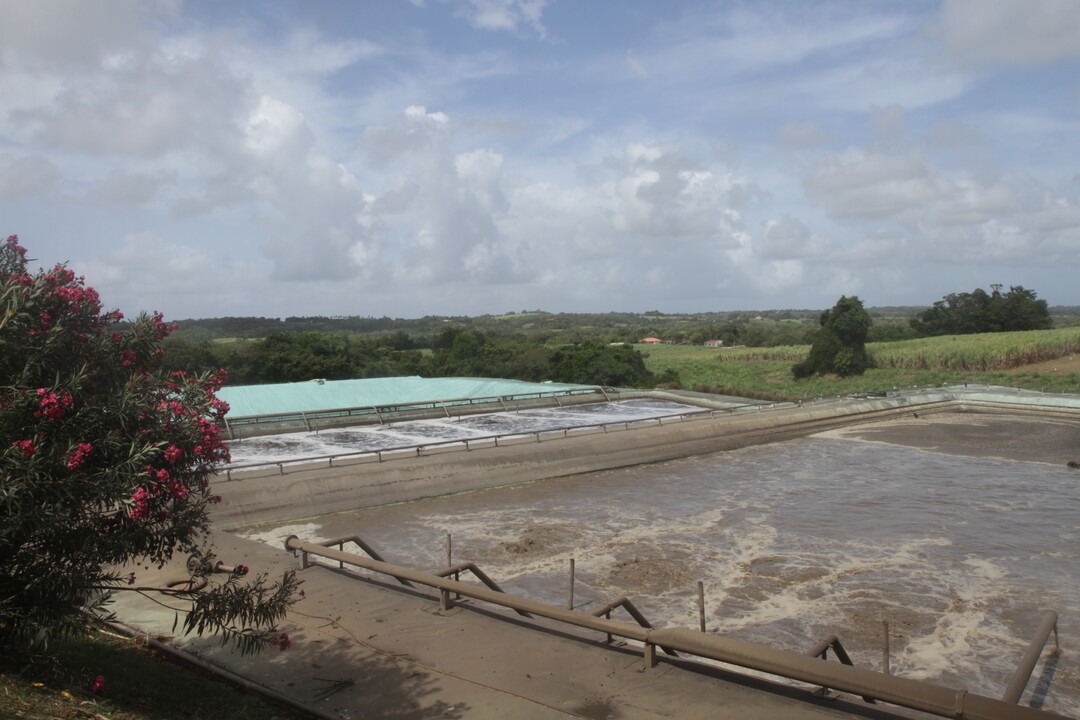
Picture : Bellevue distillery – Aeration of the vinasse.
5. Harvest season and distillation
The GI allows the sugarcane to be harvested all year round, but in practice the harvest only takes place during the dry season, when the sugarcane is fully ripe. The rainy season and cyclones are not conducive to harvesting, the soils are too wet to allow machines to enter the fields.
Distillation is also authorised all year round. For agricultural rums, distillation takes place at harvest time because the fresh sugarcane needs to be processed rapidly and the resulting fermented juice immediately distilled. As molasses can be kept for several months, they can be distilled all year round.
6. Fermentation and procedure
The GI imposes no rules about fermentation, apart from mandatory use of batch fermentation. For example, at Bologne, fermentation lasts 36 hours, rising to 72 hours at Reimonenq, or 24 hours at Damoiseau and 48 hours at Longueteau. From baker’s yeast, selected yeast and wild ferments to specific, isolated and cultured strains of yeast (like at Bologne) every distillery is free to use what they choose.
The GI imposes no rules about fermentation, apart from mandatory use of batch fermentation
7. Continuous column distillation, batch-distillation in a still or a multi-stage column
The geographical indication allows various distillation techniques for both types of rum.
The most commonly used is the multi-stage continuous distillation column with reflux (also referred to as a Creole column) and it produces rums with a variety of aromatic profiles. The height of the column as well as the number of plates and their diameter has an influence on the aromatic profile of the end distillate, so that each distillery can have its hallmark style. The stripping portion must have at least 15 plates (Guadeloupean distilleries have an average 20 plates) and the enrichment portion no more than 50 plates (in practice, between 5 and 9 plates are used). However there are no restrictions on the diameter of the columns and the PGI does not make use of copper mandatory for the enrichment column.
The distiller is free to draw off the distillate at various levels of the enrichment column or quite simply the head. The lower the level where it is drawn from, i.e. on the lower plates, the lower the ABV (Alcoholic Strength by Volume) and the higher the volatile substance content in gr/HPA. Each distillery has its own formula.
The ABV of the distillate can be no more than 90%, whatever the type of equipment used, versus a maximum of 75% for a Martinique Creole column. It therefore gives Guadeloupean distilleries greater latitude, allowing them to produce rich or lighter rums, whilst complying with the minimum volatile substance content of 225g per HPA imposed by the GI.
The geographical indication allows multi-stage continuous distillation column with reflux, but also bach distillation in pot stills and multi-stage batch distillation
Batch distillation in pot stills, in a boiler with a maximum capacity of 3,000 litres, is also permitted. Papa Rouyo, a newcomer to the Guadeloupe rum scene, has opted for this technique, although it is not yet eligible for GI status due to the afore-mentioned reasons. The entirely automated distillation workshop is equipped with a 2,200-litre wash still and a 1,100-litre spirit still. By sorting the distillation heads and tails, as well as the ‘seconds’, the pot still produces a fatter, unique and novel style of pure sugarcane juice rum, but also one that is a lot more expensive to make. Production is naturally limited by the boiler capacity and requires more energy.
Finally, multi-stage batch distillation in a Muller or Privat-style pot still is also an option.
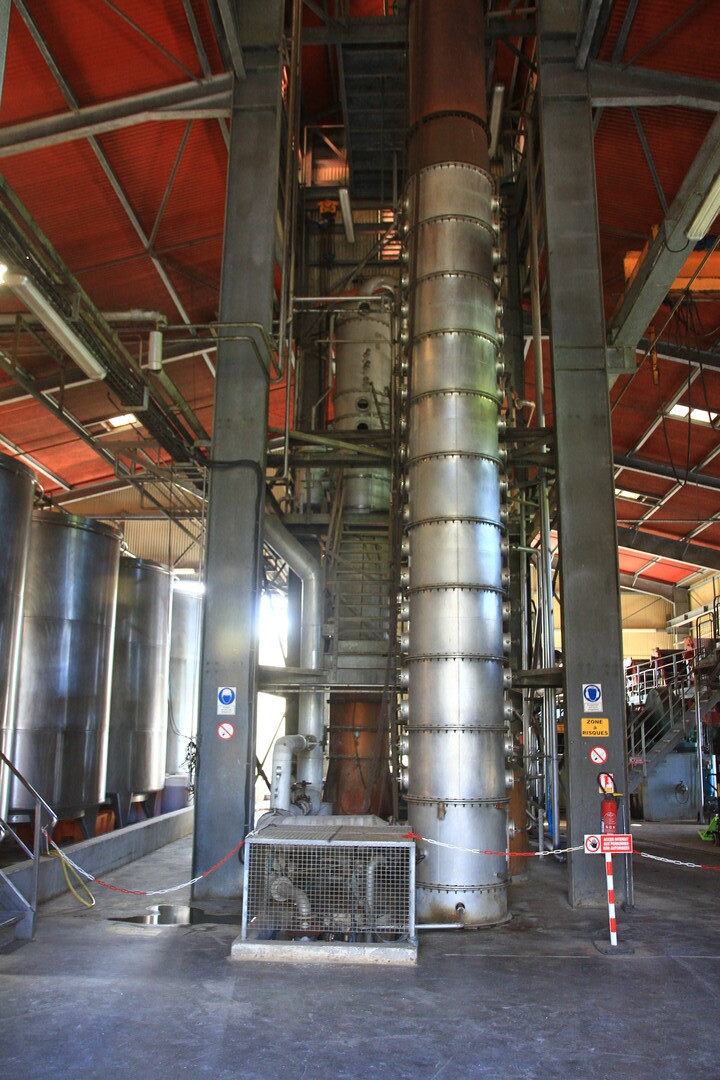
Picture: Bellevue column still
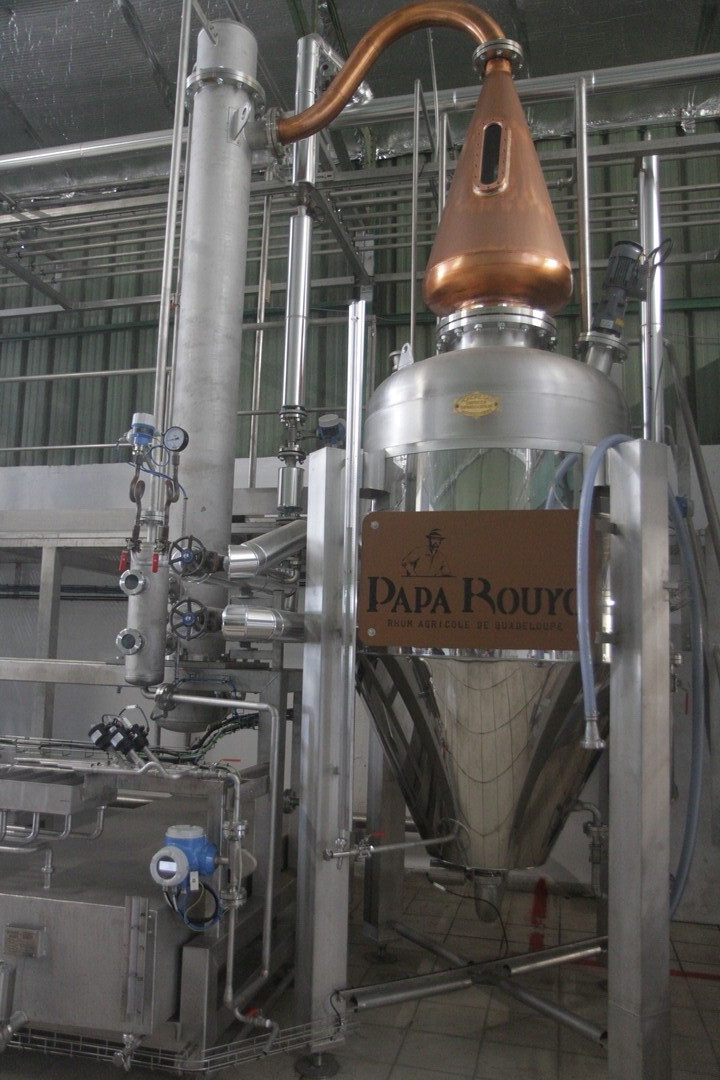
Picture: Papa Rouyo pot still
8. Mandatory ageing in the tropics
Ageing in the tropics is mandatory to be eligible for the GI. Mature and dark rums must be matured in the archipelago. Bottling, however, can take place in mainland France, irrespective of the type of rum, both young and aged. This factor could prove beneficial to the GI at a time when the price of containers has gone through the roof.
9. Key takeaways about PGI Guadeloupe
The primary aim of the PGI is to protect Guadeloupe rum producers from dishonest firms tempted to claim they produce spirits in the archipelago when in reality their distillates come from other origins.
In practice, the PGI is not very restrictive and places emphasis both on farming and on distillation methods. Therefore, rums that are entitled to the endorsement are not cast in stone and consumers can find the products that best suit them from among an extensive choice of traditional and agricultural rums. As a reminder, the rums do not have to be approved by a tasting panel prior to bottling.
More importantly, the PGI lends the Guadeloupe provenance articulacy. The concept of terroir – a French word that has no equivalent in any other language – can be difficult to define precisely, as it is a complex set of criteria generally including climate, geography, topography and soils. It can be natural or, on the contrary, partly or entirely the result of human input. But it also features know-how, because humans play a fundamental part in site expressiveness, either by adapting farming techniques to suit the local conditions, or in the case of rum production, by controlling fermentation, distillation and ageing of rum in the particular context of its homeland.
All the sugarcane fields farmed in Guadeloupe are entitled to the GI. Nevertheless, there are genuine differences in terroir within the archipelago, and with them myriad ranges of aromas. The Basse Terre terroir is different to that of Capesterre, Le Moule and Marie Galante. Each distillery can therefore produce its own signature style.
This is probably the most successful aspect of the PGI – an endorsement which guarantees the geographical origin and protects producers, whilst at the same time giving them the freedom to experiment, stand out from the crowd and create unique rums.
Miguel Glomet, François Longueteau, François de Lavigne, Danilo Grenci, Christian Vergier and Dominique Honoré contributed to this article.

